Don't wanna be here? Send us removal request.
Photo
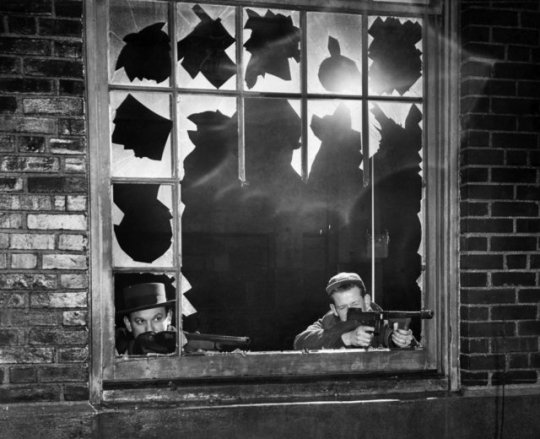

March 7, 1956: The Federal Bureau of Investigation lent its crime-fighting know-how to student detectives of the New York police, as law enforcement officials held exercises to teach 64 trainees how to properly shoot tear gas and automatic weapons and apprehend criminals. The exercises took place in “dilapidated buildings used in wartime for training of merchant seaman” on tiny Hoffman Island in the New York Bay, just off Staten Island, The Times reported.Readers, please note: This is the Lively Morgue’s last post. Thank you for following, and you can still enjoy quirky and fascinating historical gems from The Times’s past coverage on Twitter and Instagram by following @nytarchives. The entire paper since its founding, searchable and viewable as it was originally published, is also available to subscribers using the Times Machine. Photo: Patrick Burns/The New York Times
#black and white#nytimes#vintage#photography#The New York Times#1956#1950s#Federal Bureau of Investigation#Hoffman Island#Staten Island#training and trainees#detectives#tommy guns#crime-fighting#know-how
129 notes
·
View notes
Photo


March 9, 1924: In England, police dogs assisted in the apprehension of a suspect — or “suspect,” as the caption says, indicating perhaps a practice run. (Indeed, the dogs are muzzled, thankfully, here.) This photo appeared on page 108 of this issue of The New York Times. Readers, please note: This is the Lively Morgue’s penultimate post. The last post will publish on Monday. Thank you for following, and you can still enjoy quirky and fascinating historical gems from The Times’s past coverage on Twitter and Instagram by following @nytarchives. The entire paper since its founding, searchable and viewable as it was originally published, is also available to subscribers using the Times Machine. Photo: The New York Times
#black and white#nytimes#vintage#photography#The New York Times#1924#1920s#England#dogs#Lively Morgue#criminals#petty theft#Scotland Yard
102 notes
·
View notes
Photo
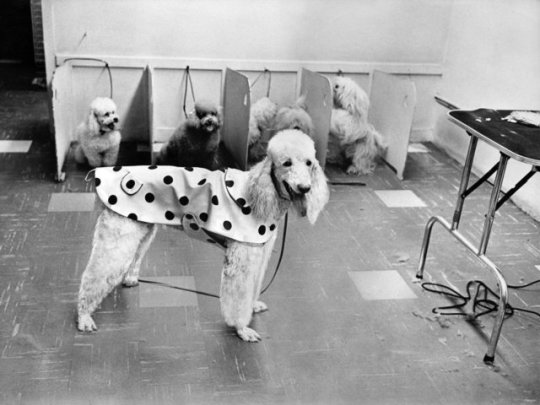

June 23, 1967: At a “poodle salon” on First Avenue in Manhattan, a pooch donned a psychedelic raincoat — part of a trend raging in canine circles. “Everybody wants their dog to look different these days,” said Jack Irving, a vendor of dog items on Hudson Street, told The Times. “Take a good look at them sometimes, and all you’ll see are rhinestones and silly doo-dads.” Photo: Arthur Brower/The New York Times
#Dogs#Manhattan#black and white#nytimes#vintage#photography#The New York Times#1967#1960s#trends#psychedelic raincoats#canine circles#doo-dads
105 notes
·
View notes
Photo
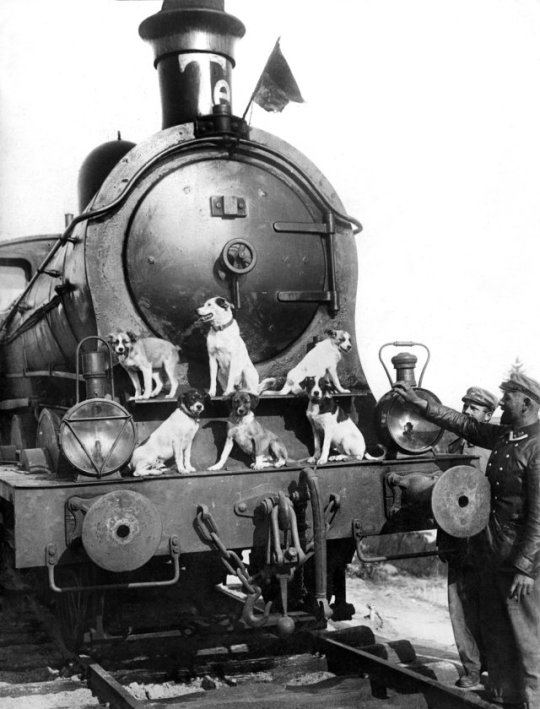
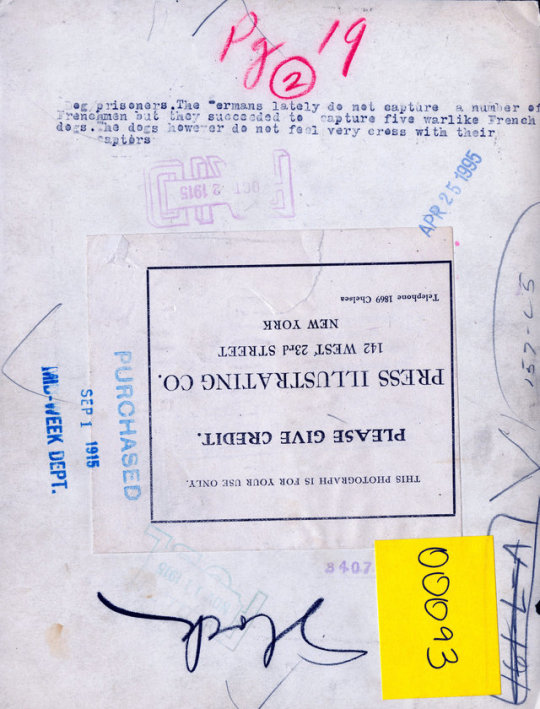
Sept. 1, 1915: “Germans lately do not capture a number of Frenchmen but they succeeded to capture five warlike French dogs,” read a curiously light caption accompanying this photo, taken while a world war was raging. “The dogs however, do not feel very cross with their captors.” Photo: The New York Times
#Germany#France#black and white#nytimes#vintage#photography#The New York Times#1915#World War I#dogs#captives#1910s
88 notes
·
View notes
Photo
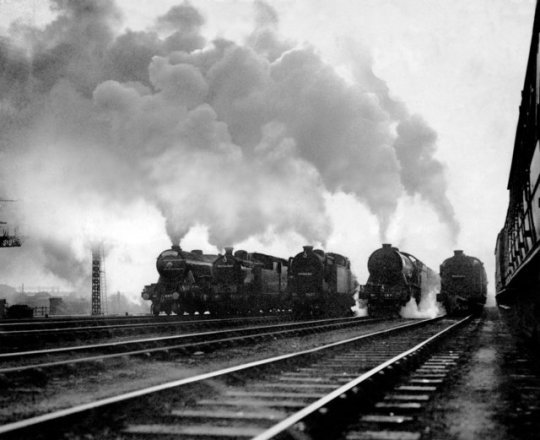
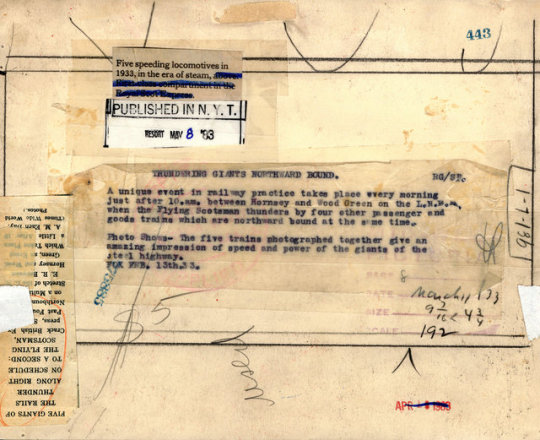
Feb. 13, 1933: A marvel of punctuality and power, locomotives in England — including the storied Flying Scotsman, still in service and inspiring hour-long waits just for a glimpse — thundered along their tracks. Photo: The New York Times
#England#black and white#nytimes#vintage#photography#The New York Times#Flying Scotsman#1933#1930s#locomotives#trains#punctuality#trainspotters
49 notes
·
View notes
Photo
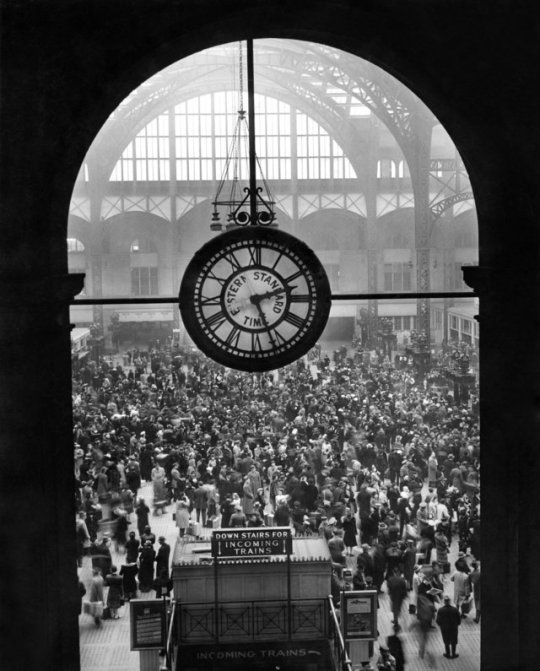

Dec. 25, 1942: A Christmas crowd at Penn Station, which picture accompanied a nostalgia-rife 1972 article about the demands of being an information clerk back in the day — when one had to memorize timetables and electronic boards were not yet available — a seemingly thankless assignment. “If there was one thing we information clerk were not noted for,” Sherman Davis wrote in The Times, “was our million dollar smiles. We were always accused of being arrogant, surly, smug, downright nasty, if you please.” Photo: The New York Times
#Pennsylvania Station#black and white#nytimes#vintage#photography#The New York Times#Christmas#Penn Station#nostalgia#Sherman Davis#information clerks#1942#1940s#holiday travel#1972
117 notes
·
View notes
Photo
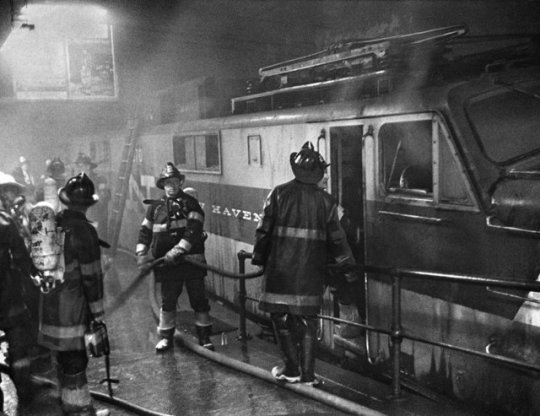
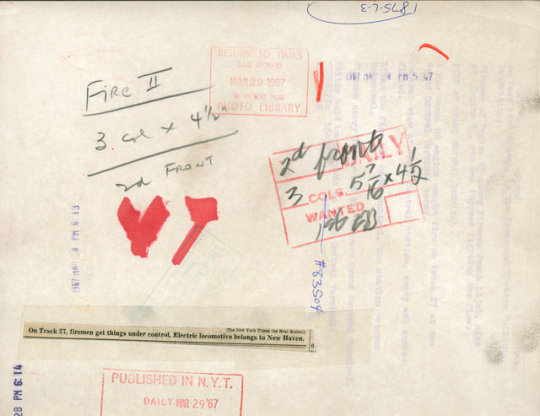
March 28, 1967: Firemen at the scene a fire on a track at Grand Central Terminal, where a fire on a train of the New Haven line sent smoke billowing through the station and into the Pan Am building and prompting evacuations. “The smoke was pouring out, and people kept demanding to know when their rains were leaving,” one witness reported to The Times. Photo: Neal Boenzi/The New York Times
#New Haven#Grand Central Terminal#black and white#nytimes#vintage#photography#The New York Times#firemen#fires#smoke#Pan Am building#1967#1960s#Neal Boenzi
61 notes
·
View notes
Photo


Dec. 4, 1957: “I saw a lighted cigarette,” reported one witness to The Times. “It was on the street rolling toward the trench. I yelled: ‘Watch it. Get out of there!’ ” A corroded gas main was being repaired when the cigarette ignited and flames shot four stories high in Manhattan for a relatively short while before the the gas was shut off. Only three were injured. Photo: Neal Boenzi/The New York Times
#Manhattan#gas mains#Con Ed#firemen#fires#flames#explosions#lighted cigarettes#black and white#nytimes#vintage#Neal Boenzi#photography#The New York Times#1950s#1957
87 notes
·
View notes
Photo
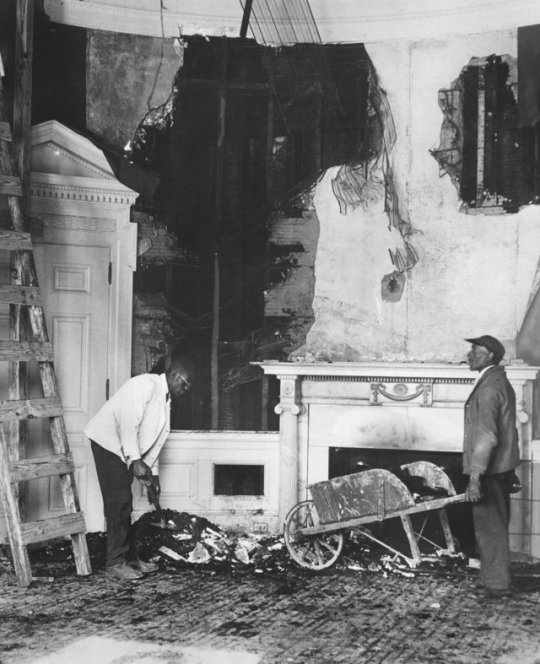

Dec. 27, 1929: Cleanup after a fire on Christmas Eve ravaged President Hoover’s private office, a “low one-story wing adjoining the White House on the west,” The Times reported. “President Hoover, hastily leaving a Christmas Eve dinner party for children in the state dining room of the White House, saw the office building go up in flames, but had the satisfaction of knowing that his personal files were saved. Valuable public records were destroyed, however,” continued The Times. No one was hurt. “The fire attracted thousands, but an augmented force of White House police kept the crowd outside gates, only firemen, newspaper men and photographers being permitted to enter.” Photo: The New York Times
#Fires and Firefighters#Herbert Hoover#black and white#nytimes#vintage#photography#The New York Times#1929#1920s
70 notes
·
View notes
Photo

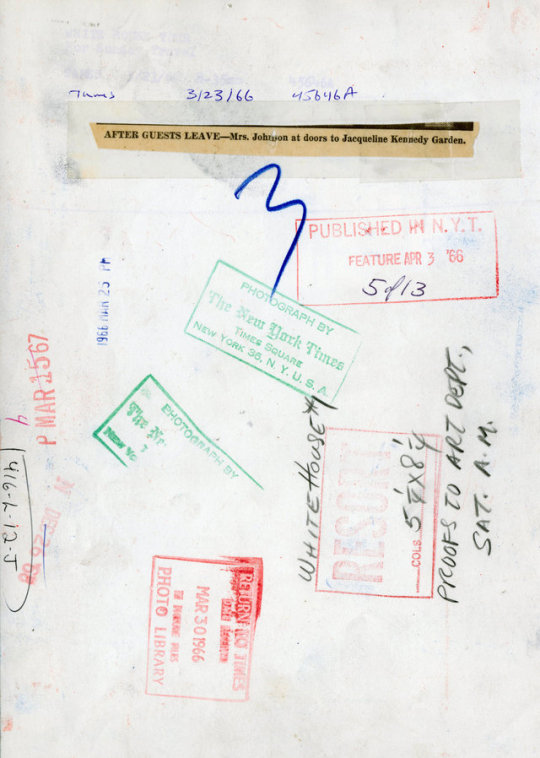
March 23, 1969: “Women visitors invariably want to know if it is real silk that covers the walls of the Green, Red and Blue Rooms. (It is.) Teenagers,” reported The Times, “inquire where Presidents Lincoln and Kennedy lay in state. (In the East Room, on the same catafalque.) Men ask where President Eisenhower practiced his putting. (Squirrels permitting.)" It was the spring visiting season, and tourists at the White House — where Lady Bird Johnson is pictured, looking on the Jacqueline Kennedy Garden (to be “viewed but not trod upon”) — were greeted by the President and Mrs. Johnson, albeit electronically. “The Johnson’s words of welcome are delivered for them in a brief recorded message that is aimed, as are several other innovations, at making a walk through the White House meaningful to visitors,” The Times reported. Photo: George Tames/The New York Times
#White House Building#Jacqueline Onassis#Lady Johnson#Dwight D. Eisenhower#black and white#nytimes#vintage#photography#The New York Times#George Tames#1969#1960s#squirrels#Cherry Blossom Festival
18 notes
·
View notes
Photo

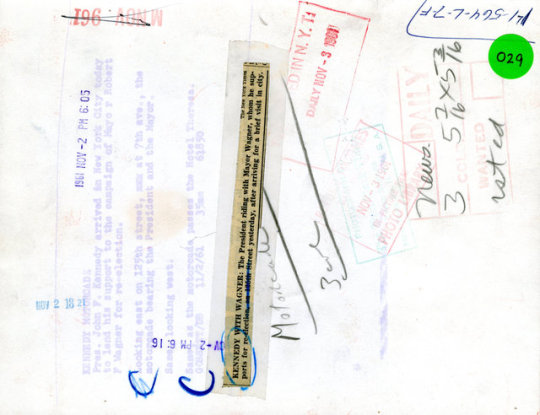
Nov. 2, 1961: President John F. Kennedy in a motorcade on 45th Street, rallying New Yorkers to reelect the incumbent, Robert F. Wagner, to a third term. Though the procession drew cheers, according to The Times, Mayor Wagner’s Republican opponent, Attorney General Louis J. Lefkowitz, was not impressed: “Not even President Kennedy’s effusive praise can reverse the tide that is flowing against the Mayor under whose administration New York has become the worst governed city in America,” Mr. Lefkowitz said. Mayor Wagner went on to win that third term, beating Mr. Lefkowitz by nearly 400,000 votes. Photo: Carl T. Gossett/The New York Times
#John F. Kennedy#New York City#Robert Wagner#Louis Lefkowitz#black and white#nytimes#vintage#photography#The New York Times#mayors#mayoral races#Carl T. Gossett#1961#1960s
140 notes
·
View notes
Photo
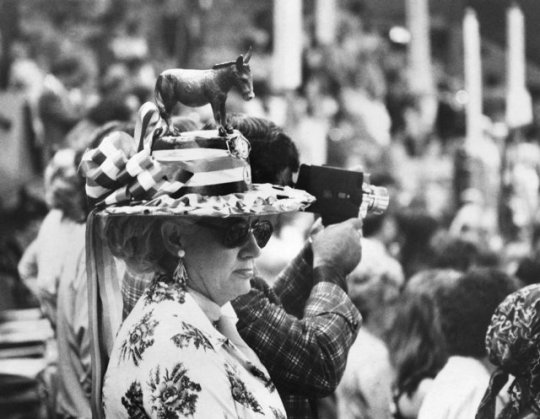

July 13, 1976: Delegates convened at Madison Square Garden for the Democratic National Convention, to adopt a party platform after nominating Gov. Jimmy Carter of Georgia to the top of the presidential ticket. A short article in The Times noted how Democrats dressed, compared to other elections years, “as if they have someplace to go: the White House.” “Four years earlier, young men as hirsute as Samson and women as informally clad as Daisy Mae jangled love beads and hurled epithets at establishment elders in the party during long, acrimonious debate over such items as acid, abortion and amnesty — the celebrated three A’s that prompted many in the national television audience to give an R rating, for radicalized, to the Presidential candidacy of Senator George McGovern,” The Times reported. Photo: Larry Morris/The New York Times
#black and white#nytimes#vintage#photography#The New York Times#1976#1970s#Democratic National Convention#Jimmy Carter#George McGovern#Larry Morris#delegates#Daisy Mae#love beads#politics
37 notes
·
View notes
Photo

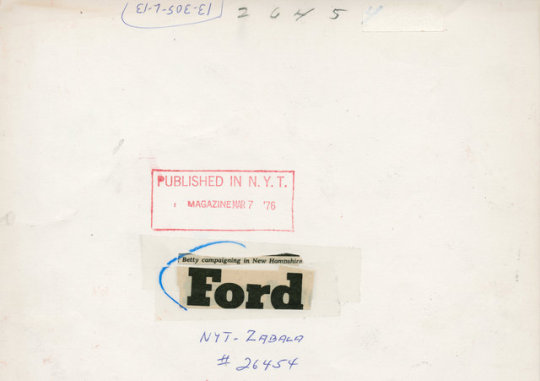
1976: Betty Ford, on the campaign trail with her husband, Gerald Ford, right, in New Hampshire. “Private pollsters report that she is the most popular First Lady since Eleanor Roosevelt,” The Times reported. “ ‘She’s blossomed since they went to the White House,’ says Congressman Bob Wilson, a longtime personal friend. ‘She’s enjoying it. Only two years ago, she talked him into retiring in 1976, and didn’t want him to go for the Vice Presidency. But there they are now, and they’re darn good with the public.’ ” Photo: Teresa Zabala/The New York Times
#black and white#nytimes#vintage#photography#The New York Times#1976#1970s#Betty Ford#Gerald Ford#New Hampshire#primaries#Eleanor Roosevelt#Teresa Zabala#presential politics
11 notes
·
View notes
Photo
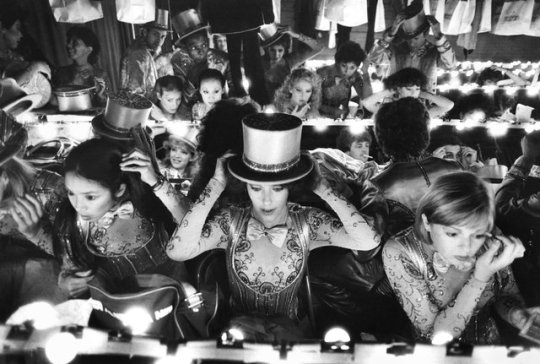

Dec. 30, 1983: A spread of photographs (page 29 of this issue) in The Times remembered 1983, which saw Diana Ross giving a free concert in Central Park despite a downpour; Ron Dixon winning the New York City marathon, and “A Chorus Line” became Broadway’s longest running show. Photo: Fred R. Conrad/The New York Times
#New York City Marathon#New York City#Central Park#Diana Ross#A Chorus Line#black and white#nytimes#vintage#photography#The New York Times#Ron Dixon#1983#1980s#Fred R. Conrad
101 notes
·
View notes
Photo


June 1975: Women auditioning for “A Chorus Line,” the musical by Michael Bennett, which is, as The Times pointed out, “staged like an audition. Twenty-four dancers are trying out for eight openings in the chorus line of an upcoming musical. The director sizes them up, immediately cuts their number to 18 and then invites the rest to step forward, one by one, and tell him something true about themselves.” “You may not believe this,” Mr. Bennett said, “but the show grew out of my feelings as I watched the Watergate hearings; it’s my reaction to the falsehood and apathy that seemed to grip the country during that period. I was sick of it. I wanted to do something on stage that would show people being honest with one another.” Photo: Jack Manning/The New York Times
#Michael Bennett#A Chorus Line#black and white#nytimes#vintage#photography#The New York Times#1975#1970s#Jack Manning#dancing#confessionals
19 notes
·
View notes
Photo
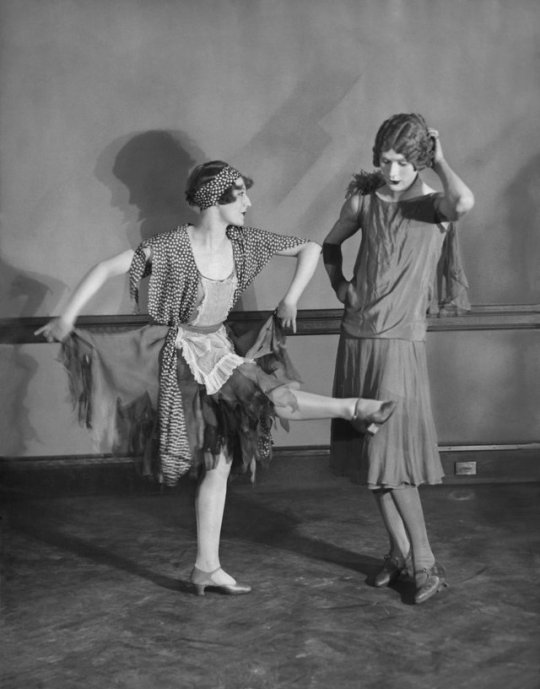
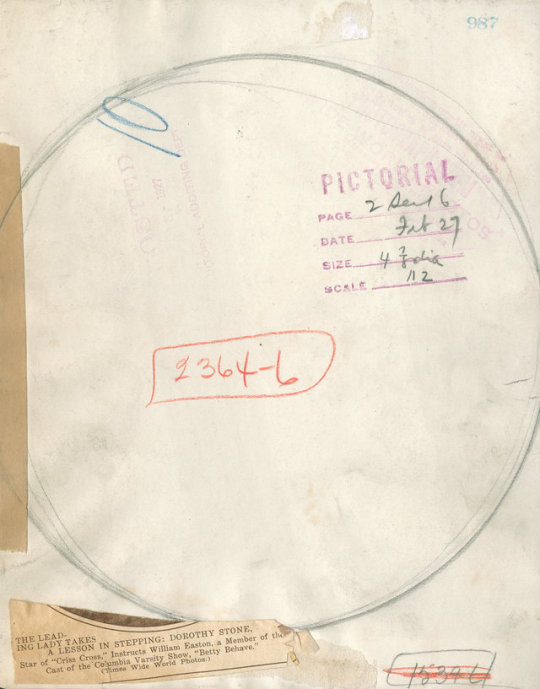
February 1927: Dorothy Stone, left, star of the musical comedy “Criss Cross,” gave William Easton a lesson in stepping as he rehearsed for his role in a cross-dressing production by the Columbia varsity players called “Betty Behave.” “The authors have tried to eliminate ‘collegiate gags’ and present it with the hope that ‘it will compare favorably with a professional production,” The Times reported. Photo: The New York Times
#Theater#1927#Criss Cross#black and white#nytimes#vintage#photography#The New York Times#1920s#Dorothy Stone#William Easton#Betty Behave
47 notes
·
View notes
Photo
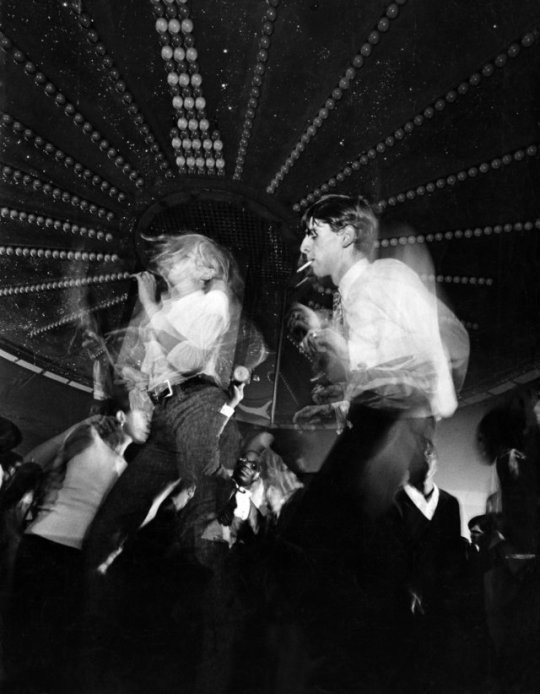
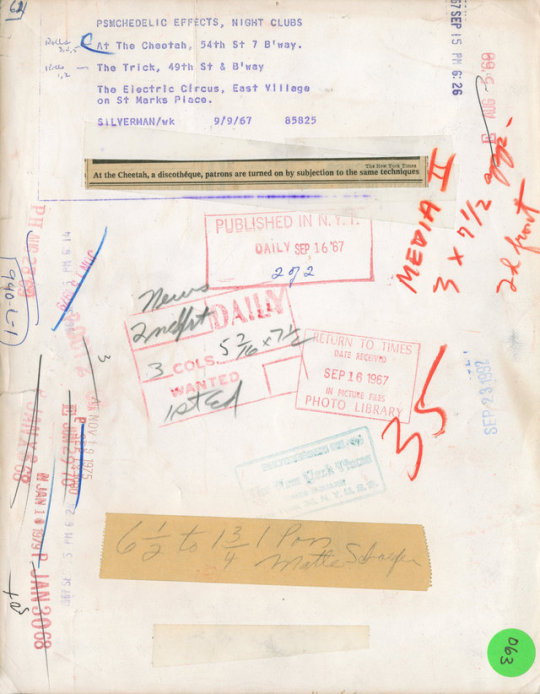
Sept. 9, 1967: At a discotheque on St. Mark’s Place in Manhattan, club-goers were subjected to “the technique of multimedia,” which, The Times patiently explained, is a “jarring combination of stimuli — sounds, lights, colors, smells and moving images,” which aimed “at reaching audiences by a supersaturated attack on all the senses, not just eye or ear.” The “technique” was increasingly being used to liven everything from Scott Paper company presentations to museum exhibits. “In our daydreams we approach every project with ‘how many senses can we involve?’” said one multimedia consultant. “The better we can control everything — light, sound, temperature, humidity — the better we like it.” Photo: Barton Silverman/The New York Times
#black and white#nytimes#vintage#photography#The New York Times#1967#1960s#Barton Silverman#discotheque#multimedia#techniques#paper company presentations#Beatles#Timothy Leary
183 notes
·
View notes